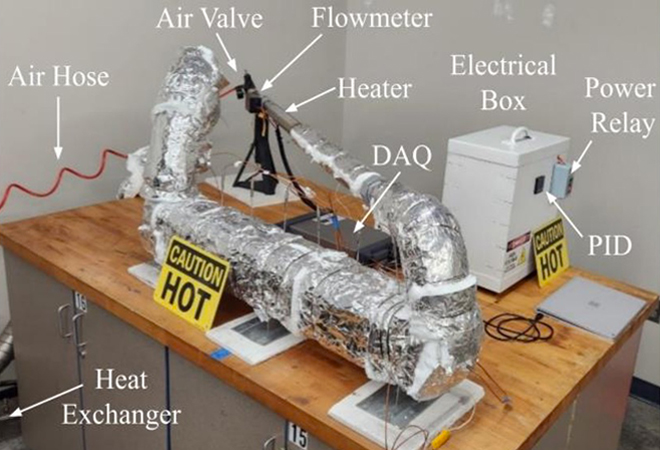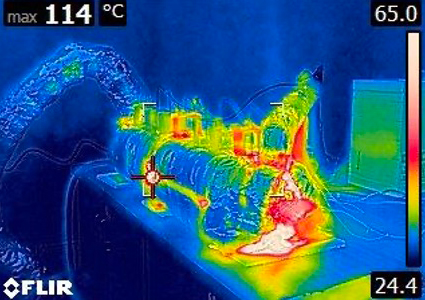Cal Poly Pomona Energy Storage Project Ready for Scale Up

The Cal Poly Pomona team is progressing on research, development, and scaling up of a low-cost energy storage system using byproducts of desalination, an innovative project funded in part by Southern California Gas Company’s Climate Champions program. The project has the potential to enhance the availability of clean and sustainable power and water in California. Energy storage systems are key elements of our future power grid that will run 100% by renewable intermittent sources. Low-cost and high-efficiency Thermal Energy Storage systems can increase the dispatchability of renewable sources and provide peak-load shifting and waste heat recovery options for homes and businesses.
In the project led by Dr. Reza B Lakeh at Cal Poly Pomona, a group of 20 students got involved in developing a lab-scale thermal energy storage system that uses minerals removed during desalination for thermal energy storage. The project will repurpose the collected salt to store thermal energy for future use. Solar-thermal and nuclear power plants are among potential beneficiaries of the technology. The chemical composition of minerals that are extracted from water depend on the water source; however, the salt mixture is rich in benign salts such as Calcium Carbonate and Sodium Chloride.
The project could be a solution to environmental and economic challenges the desalination industry is facing in concentrate management while scaling up a low-cost energy storage solution to pair with an increase in intermittent renewable energy generated through solar and wind. The project is an example of the university’s learn-by-doing approach and commitment to environmental responsibility for which the polytechnic university is known.
The Southern California Gas Company’s Climate Champions grant enabled the research team to complete the demonstration of a 1 kWh lab-scale thermal energy storage module that utilizes desalination salt from an inland desalination plant in Southern California. The results of thermal cycling tests were analyzed, and a research paper was submitted to the American Society of Thermal Fluid Engineers (ASTFE) by student researchers George Lockwood, Missael Cuevaschavez, Andres Rodriguez, and Rozina Nalbandian. It was accepted at the 8th conference in March 2023. The design of an enhanced and larger scale (5 kWh) system that utilizes the team’s most recent findings is finished, and system test and assembly is underway.
The photos show a schematic of the table-top thermal storage element (top image) and an infrared view of the same (bottom image) during a test at the Energy Laboratory of the College of Engineering at Cal Poly Pomona.


